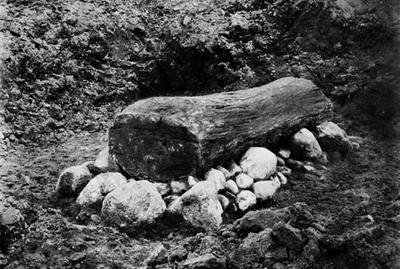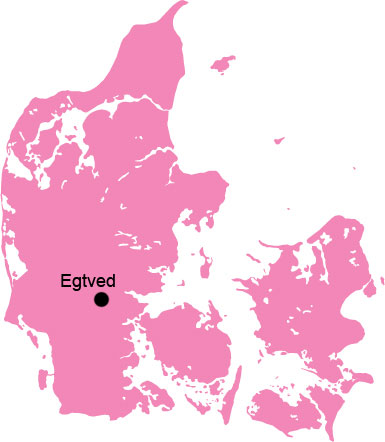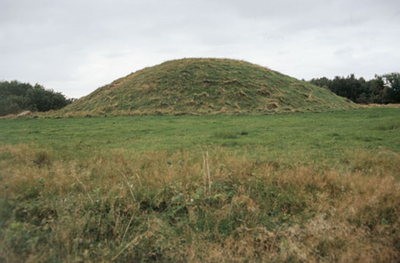The Egtved Girl’s grave
When the Egtved Girl’s barrow was excavated in 1921, it was only a shadow of its former self. Earth and materials had been removed from it. Nevertheless there was a well-preserved grave in the eastern part of the mound. The Egtved Girl lay in an oak coffin. This was a hollowed-out, stripped oak trunk. One half functioned as a coffin and the other as its lid.
Everything lay in the coffin as it had done at the burial almost 3500 years ago. Before the Egtved Girl was laid in the coffin it had been lined with a cow skin. She was carefully laid with her grave goods on the soft skin. Afterwards she was covered with a woollen blanket and the coffin was closed. Almost 3500 years later, when the coffin was opened again, there was not much left of the Egtved Girl herself. The cow skin she lay on had also decomposed. The skin had rotted away and only the hair was preserved. However, in these hairs the contours of her body could be seen. One can still see today how the weight of the dead girl’s body pressed the hairs down. A yarrow flower was laid on the edge of the coffin before the lid was put on. The flower reveals that the Egtved Girl was laid in her grave in the summertime.


Egtved lies in south Jutland, not far from Vejle. The Egtved Girl's attractive belt plate is made of bronze, which perhaps came to the Vejle area thanks to north-south exchanges in the Bronze Age.

